A Taste of Austin








Maddie Davis (who goes by Maddie), is a 9th grader at LASA High School, and is one of the writers/editors for our Ezine magazine. She would like to write about the best food spots in Austin, due to our magazine being a cuisine magazine. In her free time, she enjoys drawing and painting because she finds it relaxing, as well as reading because she likes getting lost in a story. Another hobby of hers is sparring with her sister. Maddie says that she wants to go to college and will most likely study science. An interesting thing to know about Maddie is that she doesn’t like pizza, but still believes pineapple belongs on pizza. There were also many situations where Maddie has mistaken her electronics for food. Just yesterday, she unknowingly ate her phone because she thought it was a sandwich.

Rachel Tong (who prefers to go by her first name, Rachel) is a 9th grade student in the 4th and 8th period LASA Ezine class, and one of the editors of our ezine magazine. In her article, she plans to compare the perspectives of different contributors to the food industry. Rachel has many hobbies, including playing the piano, sleeping, and eating. ”Why do I like my hobbies? Because I am a very musical person and I’m lazy, so I don’t like to do things that require a lot of work,” states Rachel. An interesting fact about Rachel is that she doesn’t like cheese. As a child, Rachel would eat ants and have allergic reactions to them. One lively ant reportedly stung her on her lip, and Rachel retaliated against the offender by consuming the insect. “I didn’t know it was an ant,” claims Rachel. Her lip swelled, and that was how she knew she was allergic to ants.

Carlos Aguirre, one of the many creators of our magazine, goes by Carlos. He is currently a freshman at LASA Highschool.. In his Ezine article he wants to write a report on the variety of cuisines in Austin, and different cultures in the food industry.. Carlos’s hobbies include running, which is a stress reliever for him, and baking delicious foods. In his future, Carlos plans to go to college and seek higher education. Some fun facts about Carlos is that he is an avid fan of Indian food, and it took him an hour to think of a fun fact, which is that he owns an axolotl named Squishy!

Patton Jobe, who reportedly goes by “Uhmm… Patton?”, is one of the writers and editors of our food magazine. He is a freshman at LASA that likes drawing, playing video games, hiking, and adventuring for fun. Patton states that he would like to write about reviews: what they are, the truth behind reviews, and how they affect restaurants as a whole. After high school Patton plans on attending college and studying what he loves: something he hasn’t discovered yet. An interesting fact about Patton is that he repels, which he explains is “basically, you know like uh, it’s like going off a cliff you know, uh repelling it’s like. Repelling.” All in all Patton is excited for the magazine, and he hopes you enjoy it!

ustin, the city of music, filled to the brim with colorful local businesses coated with personality and creativity. The local restaurants here are especially welcoming and unique. Each one strives to work harder than the other
to stand out in this city full of distinctive and blossoming businesses.

For one local restaurant owner, finding something new to add was extremely difficult, especially with the food that he serves. Mo Pittle is the owner and creator of the JewBoy franchise. He has two restaurants under the JewBoy
name: JewBoy Burgers and JewBoy Subs. Both of these restaurants’ food options are anything but memorable. So, what does this local business have to draw people in? JewBoy Burgers is based on one thing, it’s as Mr. Pittle stated, it’s “a celebration of culture.” Mr. Pittle’s burgers are unique in that they hold the culture he lived in. He says,
Every bit and part of the burger is what Mr. Pittle himself thought would make the best burger. From the bun to the brand of salt, he chose whatever he thought tasted the best and represented his personal culture. Let’s begin dissecting
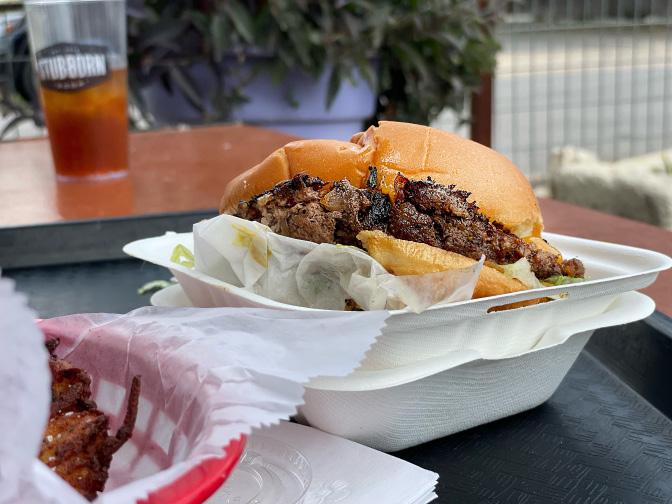
“...it’s the antithesis of let’s try to make everything for everybody.”
his creation with the bun, it’s unusual because it’s not a wheat bun, it’s a potato roll. Unlike most local Austin restaurants, Mr. Pittle’s ingredients are not all locally sourced. Although that may sound like a bad thing, it’s actually what makes his burgers so special. The bun he uses is a potato roll from Pennsylvania, “the Pennsylvania Dutch just make an amazing burger bun”. When Mr. Pittle found this bun while living there and fell in love. When opening his own restaurant he knew this is what he wanted for his burger’s bun. The next part he explained was the beef, and how it’s cooked. “The way the burgers are cooked is a reflection of border cuisine,” he explains. Mr. Pittle grew up in El Paso, at the border of Texas and Mexico. “I actually lived in Mexico for a couple months,” that’s were Mr. Pittle picked up his technique for border style grilling. He also picked up the tastes in specific mustard and pickles to add to his burg-
ers, as well as his secret way of grilling onions.
Mr. Pittle’s differences from other restaurants doesn’t stop simply at his burgers, his restaurant doesn’t produce or sell fries. The staple to many burger restaurants are the fresh fries, but not for Mr. Pittle, his version of fries are the Jewish potato pancakes, Latka’s. Mr. Pittle grew up Jewish, and to this day, still incorporates that in his life. One of his childhood favorites is the Latka’s, mostly served during the Celebration of Lights or Chanukah. Latka’s are deep fried shredded potatoes made into pancakes. Still a deep fried potato-ey treat, just not long and stripped. JewBoy has much to offer when it comes to flavor,
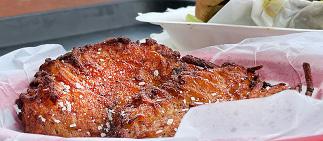
“...Each place I went, I would see and experience things that were unique to that part of the country and that city,”
and Mr. Pittle is a kind and outgoing guy, he and his restaurant stand out amongst the crowd, and makes a positive impression on all that have dinned there.
This city is weird and has a mix of cultures, so catering to everybody is harder than in rural, single culture cities. Local busi-
nesses may capitalize on this because for a local business to grab the attention of new customers they have to play to their strengths. For Mr. Pittle, it’s the culture and background of his agreements, but for others, such as Cody Taylor, co-owner and founder of Industry, his strengths lay in hospitality. His restaurant’s
magnetic factor is its hospitality and environment. He prides his restaurant as “a place where you want to come hang out and just be”. While most restaurants’ unique and enticing quality is their food, Mr. Taylor takes a different route. He designed the restaurant as a place for people to “come and go as you please, if you

“What we call this is a third place, so you know, you have your job you have your home, where is the place you want to go to, whether you’re just here to have drinks or an appetizer or you or even a whole dinner, this is supposed to be that place where you feel like coming here.”
just want to kill an hour, grab a chips-and-queso, meet with friends for happy hour, or have full on dinner, …we want it to be a space that people want to come back to often,” Mr. Taylor says. His business model is quite ingenious. Many restaurants have you on a tight leash as far as time spent there goes, but at Industry, you can stay as long as you’d like.
Austin is just brimming with culture and beauty, with different perspectives given stages and narratives of their own. But with a city this expansive, businesses have to find new ways to keep up, restaurants specifically. I think that both of the restaurants written about today have a adapted to thrive and add there own narrative to the Austin restaurant industry. They certainly have, and will continue to, give others marathons for their money.
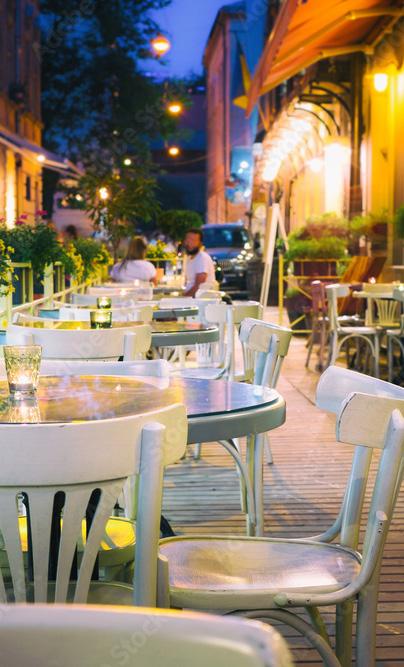

Image Credit: pxhere
restaurant is one of the early sources of entertainment, and sustenance for society. But besides requiring food to survive, why do you ever go to a restaurant as opposed to making your own food, or ordering it from your home? One local expert on this topic is Ryan McElroy, co-owner of the new chain of restaurants Bird Bird Biscuit. He knows there are many reasons to socialize with family or friends, enjoy genuinely good food, or explore different cuisines. But what needs to be explained is how a restaurant plants the idea of itself in your brain, or rather your stomach. Many people who’s occupations do not rely on the food industry are clueless to the inner workings of a restaurant, especially how a restaurant brands and advertises itself to the world.
A restaurant’s success is

based on its popularity among the public. What is a restaurant without its customers? The saga starts at the beginning of a restaurant’s life cycle. One thing that almost everybody knows about restaurant creation is how risky it can be. Only the greatest and most thought out

is one of the most difficult parts of the creation of a dining establishment. One thing that goes into the creation and success of a restaurant is its location, which decides if it will develop. A lot of thought has to be put into where a restaurant is established.
restaurants make it far in life, and many go out of business due to wavering numbers of customers in just the first few months, before they can see their true potential.
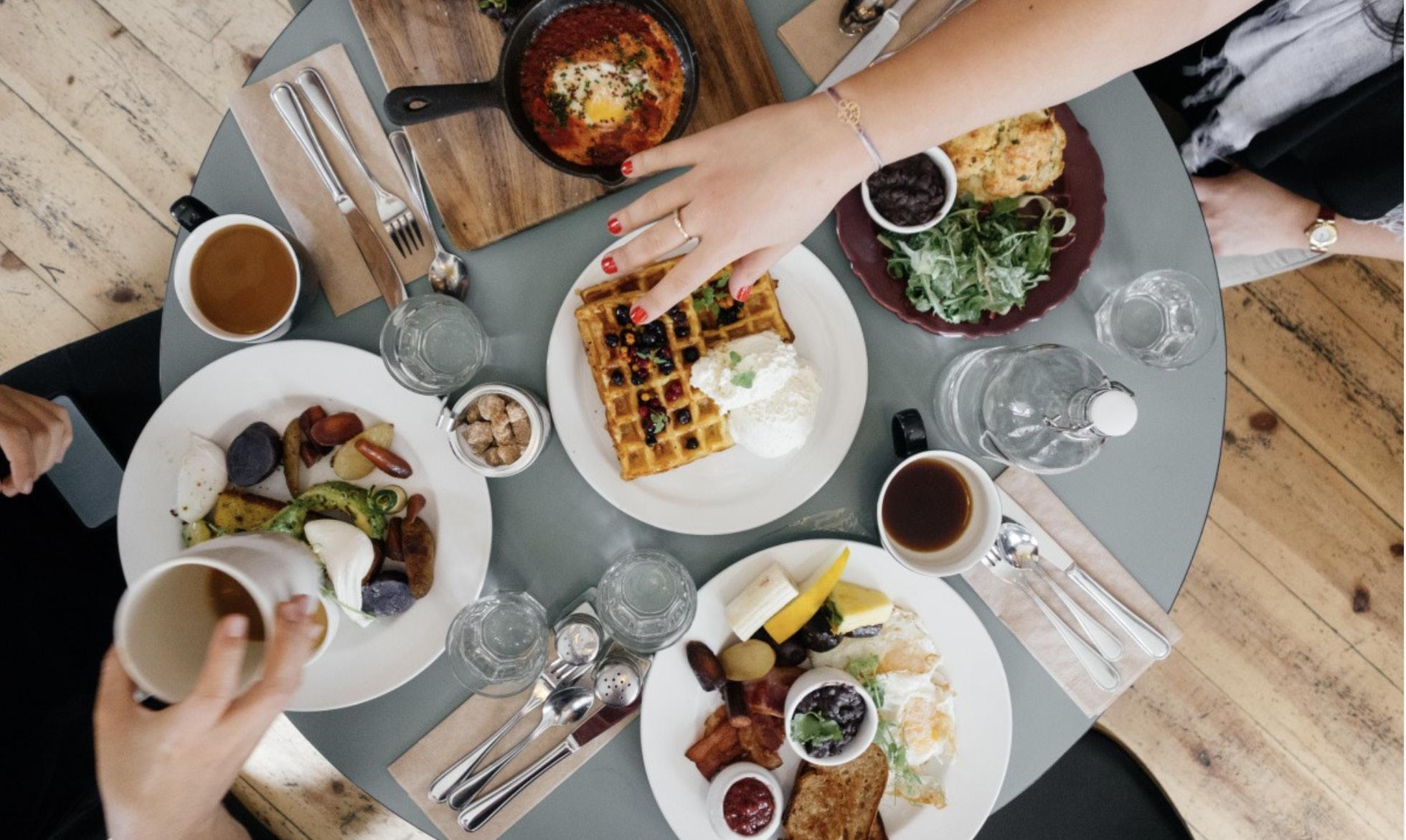

Many things go into planning a restaurant, as it
A major reason is whether or not the area is competitive in the food industry. Most new restaurants settle down in an area with as little competition as possible. Another factor that goes into the location of the restaurant is if people live nearby, or if it is easily accessible to the public. Restaurants become more popular if they are convenient to the people. But the main contributor to the location of a restaurant is real estate. People are either going to choose the cheapest place (even if it does not apply by the previous rules), or an interesting location that will be memorable to the customers.
The next step to ensure the success of a restaurant would be its design. One of the reasons people come back to a restaurant
is if it is memorable, and a fantastic design will ensure that.The design of a restaurant consists of many things, like the theme or the building itself. People revisit restaurants either because they want to eat out, have a good experience with friends or family, or because they truly enjoy the atmosphere, design, and presentation of the restaurant. Great! So, now that we are past the set-up page, we can get into the juicy bits. Next, here is how the restaurant advertises itself. How a restaurant advertises itself is a tricky, and expansive topic. Everything about a restaurant contributes to how well it performs to the public, and espe-
cially if it is the start of a restaurant’s companies or chain, it can be difficult to spread the word of the establishment to the public. Let’s backtrack to advertising. A restaurant has a plethora of ways to advertise itself, to make sure everybody knows they exist, and wants to eat at their establishment(s). Ryan McElroy says the most common form of advertisement is the word of mouth, he also says 60% of customers come from this form of advertising. If you can, think of how you found some of your favorite places to eat in your city. It was probably because of a friend, or
an associate and you decided to give it a shot. Simply spreading the word is the oldest, and most stable way to present your restaurant to the public.
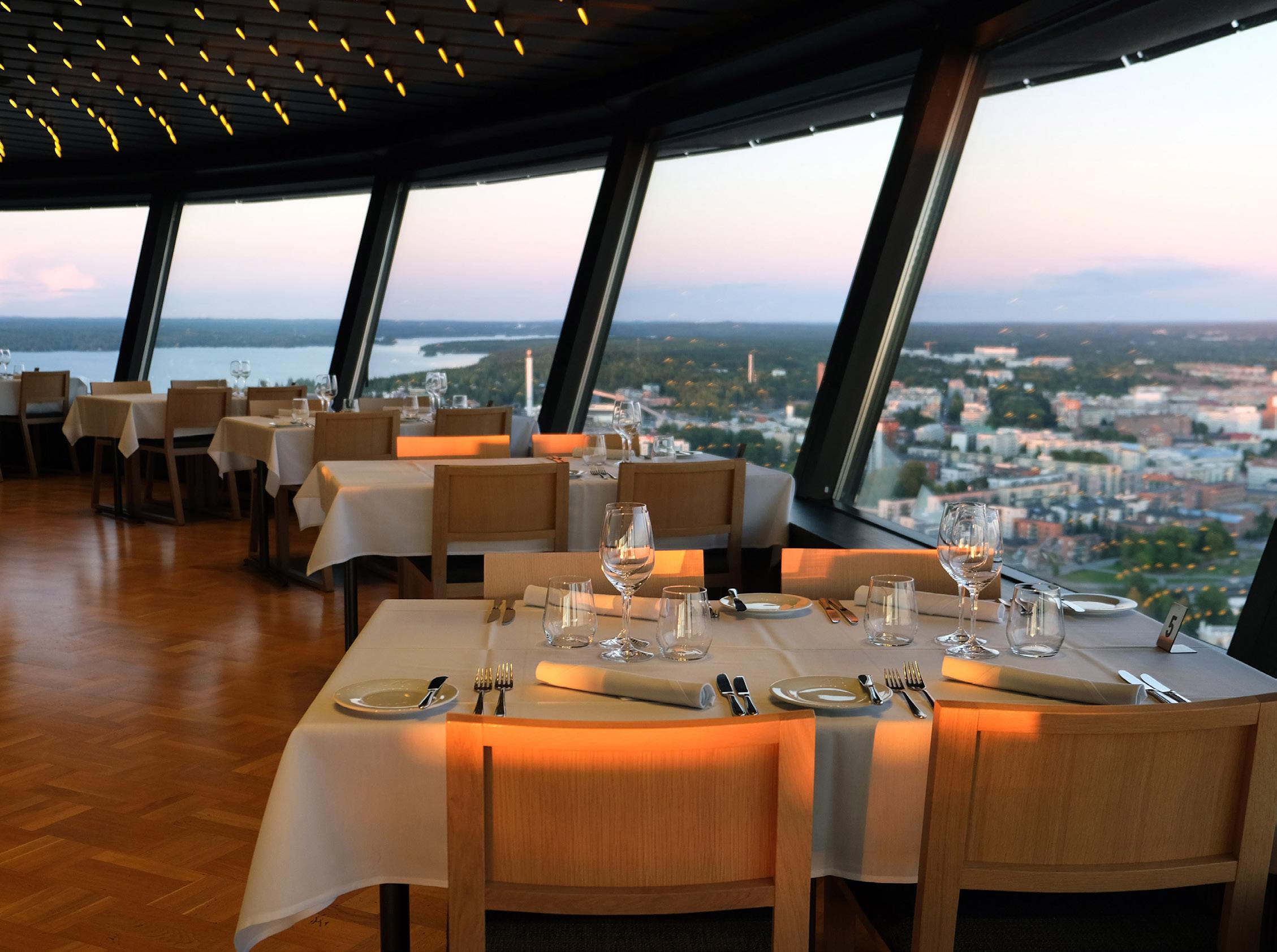
A separate way to advertise a restaurant would be to make sure it visually stands out from other restaurants in the area, and provides a unique experience for

With a great team the other obstacles seem surmountable. When the team is in a hard spot, so are we. We live and die together. -Ryan McElroy
the customers. Why do you go to a fancy restaurant instead of a McDonalds? Sure, you might like the foods from both restaurants, but they both provide very different experiences. A restaurant owner wants to make sure that their restaurant is something that their customers want to come back to, and is unique to only them. They want to differentiate themselves from their
competitors visually, through their dishes, and the ambiance of their restaurant. Another way to advertise a restaurant is through all forms of media. People look towards the media for advice and guidance, and if your restaurant is having some light shed on it in the public eye, then that is great! Media can be online, in the news, in books, or any other way information can be visually portrayed. Although some people do not rely on these forms as much, they will bring you loyal customers.
Finding good restaurants to visit can be difficult, especially if you have nobody to turn to. Social media then comes in to save the day, and direct you to the nearest restaurant with the best reviews. Online reviews pair with the social media aspect of a restaurant and its management.


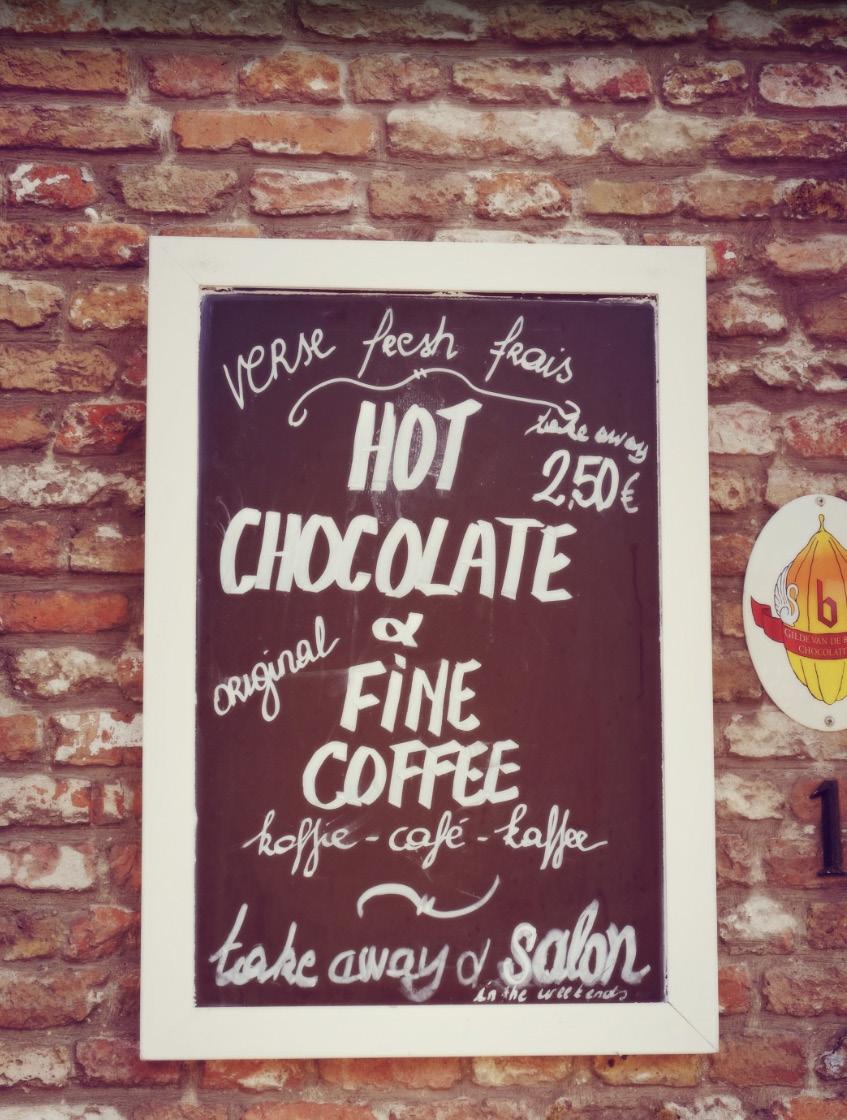
When somebody is surfing the internet, looking for a place
to dine they will almost always not travel to, the location with mediocre, or surprisingly low ratings. Food ratings make a huge difference in whether a restaurant succeeds or not, and this is up to the public. If the creator of a restaurant is already renowned, then it will not be difficult for them to open another restaurant, and reviews will not be as large of a problem for them as they will have already built up a reputation among the masses. But for those who are just jumping into the food industry it will be harder for them to build up their reputation if you have sloppy, or negative reviews. One way to ensure this does not happen is to push customers to leave good reviews. The other way to ensure good reviews for your restaurant is to provide your customers with the greatest experience possible.
By: Patton Jobe
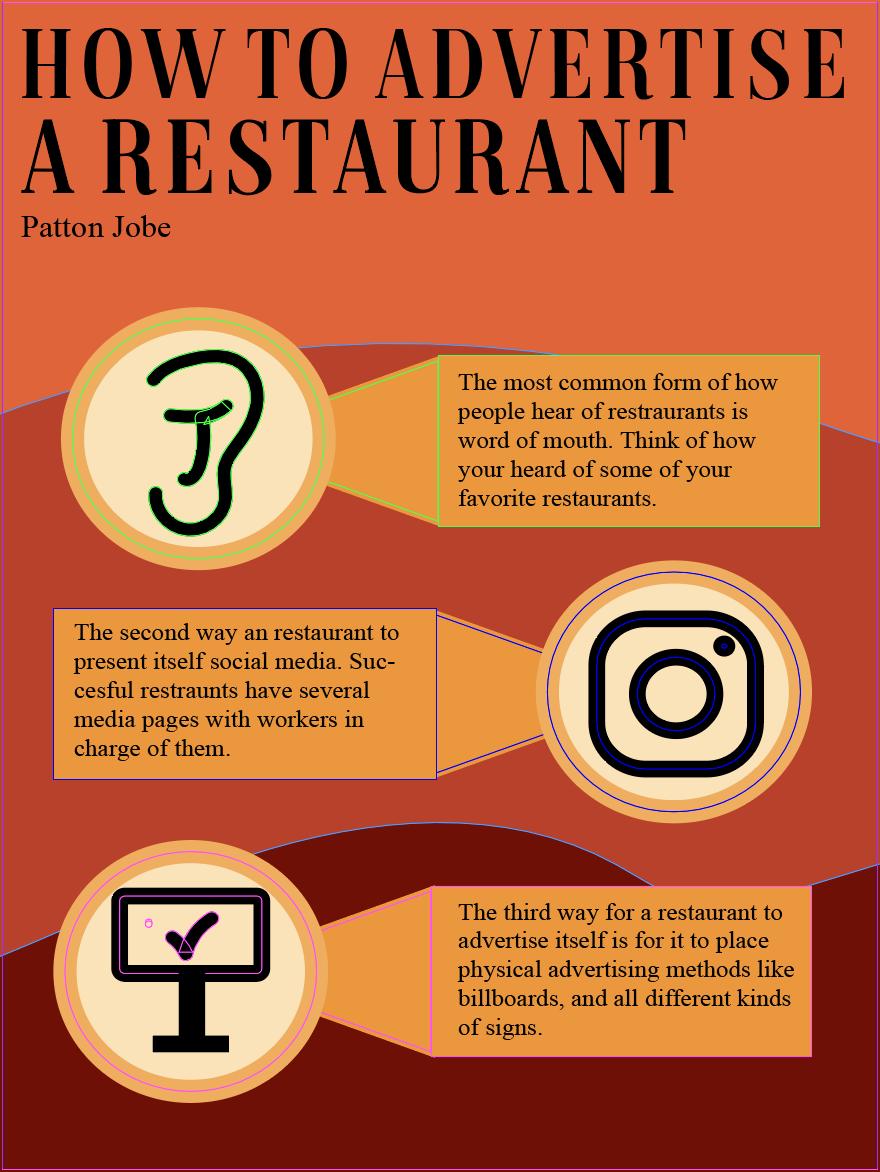

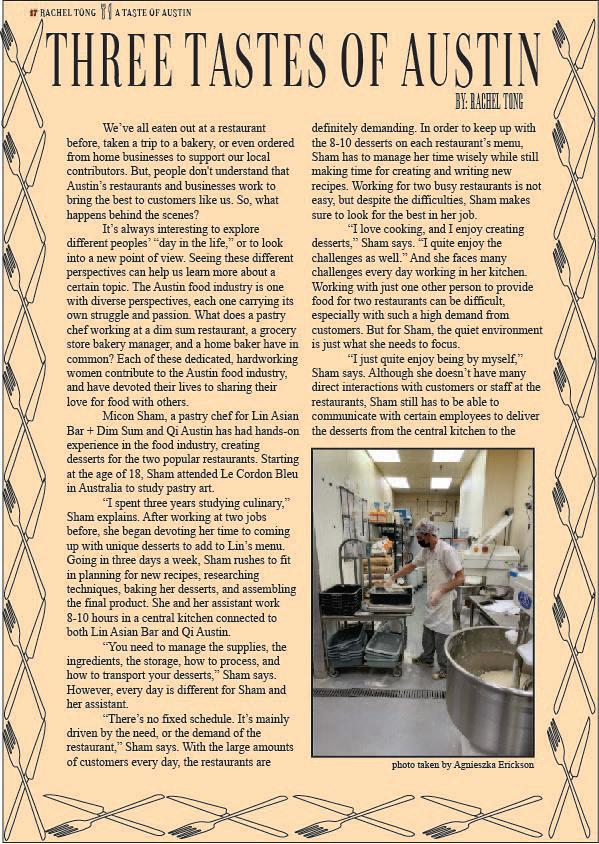
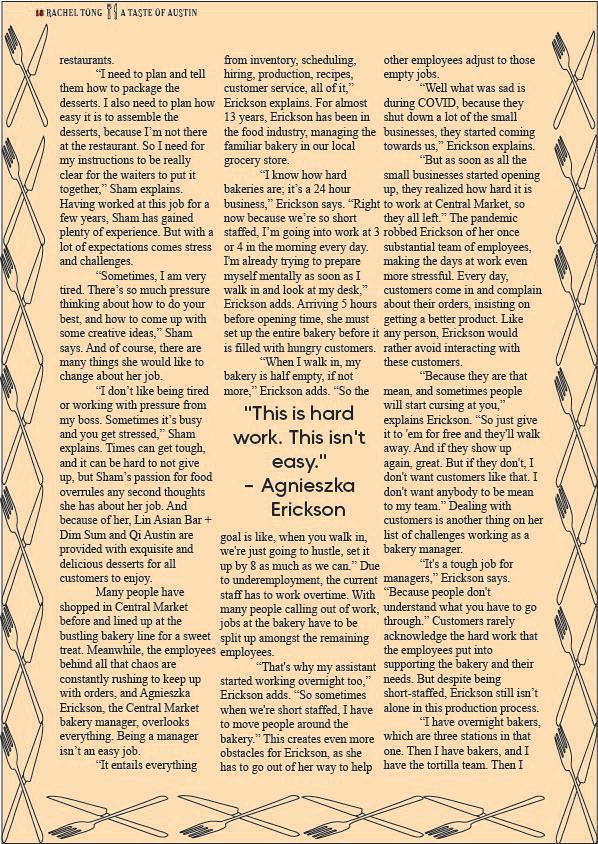
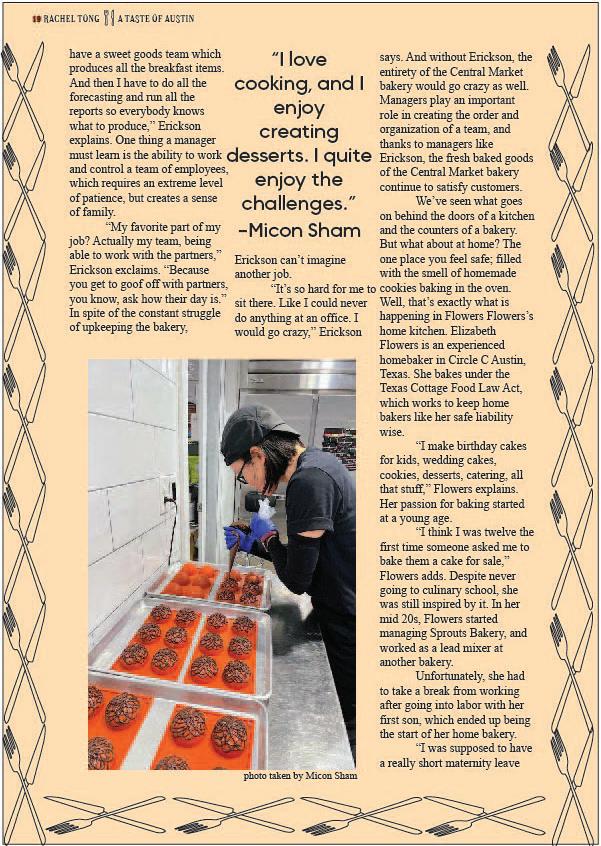

If using gelatin sheets:
1. Fill a small bowl (that can fit the gelatin sheets) with cold water and soak the gelatin sheets in the water.
2. Set the bowl aside for at least 15 minutes until the gelatin absorbs the water and softens.
3. Remove the gelatin from the water bowl and squeeze the excess water out.
If using gelatin powder:
1. Pour 48g of water into a small bowl.
2. Sprinkle the gelatin powder over the water and mix well.
3. Set aside for at least 15 minutes until the gelatin powder absorbs the water and swells.
Panna Cotta: - 500g heavy cream/whipping cream
- 50g of sugar - few drops of vanilla extract (optional) - 7.5g geltain sheets/7.5g gelatin powder + 48g water
Strawberry Topping: - 150g strawberries, diced - 30g sugar (vary according to your taste)
\Panna Cotta:
1. Place the cream and sugar in a saucepan.
2. Heat over medium heat and stir the mixture until the sugar completely dissolves.
3. When the cream is steaming (not boiling), turn off the heat.
4. Add the bloomed gelatin into the hot cream mixture and gently stir until the gelatin completely dissolves.
5. Add the vanilla extract and stir (optional).
6. Pour the cream mixture into the jars, gently stirring the mixture each time before pouring.
7. Allow the mixture to cool down slightly, then cover the jars with plastic wrap and store in the fridge for a few hours (or overnight).
Strawberry topping:
1. Combine diced strawberries and sugar together.
2. Stir to combine, then cover and refrigerate for 30 minutes (or overnight).
3. Serve with the panna cotta.
4. Enjoy!
BY CARLOS AGUIRRE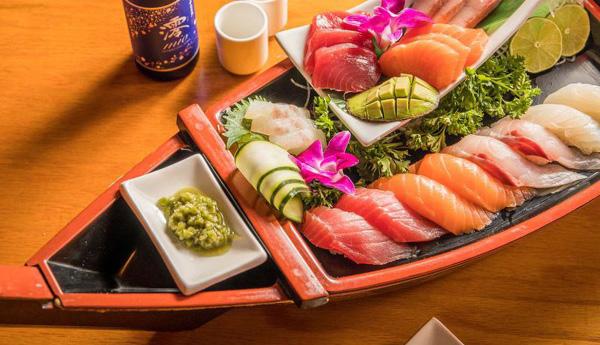
Beginning a restaurant is not just beginning a business for some. For many, it’s beginning a community. A story. A home for their children and families. A place for their dreams to bloom like a brilliant cabbage on a small town farm. Margo runs a small restaurant with his family that requires very few employees. He started his business only about twelve years ago in Austin, and it is still going strong. His story began during his childhood when he had his first experience with cooking. Margo worked as a dishwasher in a restaurant across from his high school in El Paso, TX, a city on the Western side of Texas, bordering Mexico. In this city, the majority of the population is composed of Mexican immigrants coming from Juarez, in the Mexican state of Chihuahua, to look for jobs in the US. Margo’s family moved to the US when he was in middle school,
and the struggle of integrating their children into American schools was severe. “When I arrived here, I didn’t know much English,” Margo explained during our interview, “so it was difficult to communicate with some of my classmates and teachers. But luckily, there was a large Mexican community over there, so I wasn’t completely alone.” Margo finished high school in the US and went on to attend high school.
Once in high school, he had to work to help support his family, as jobs for immigrants were difficult to find. He found a job as a dishwasher at a small restaurant across from his high school.
He first discovered his love for food in his home. Living in Mexico, the food was delicious and normally home-cooked by his mother. Once he moved to the US, the ingredients
his family used to cook were no longer available, so he had to find alternatives. Although Mexico had a wonderful cuisine, Margo quickly discovered that El Paso had a special mix of culinary recipes. El Paso has its own unique mix of Mexican and American food. “The food from El Paso is like nowhere else,” said Margo, “recipes I learned there inspire several of the dishes that we serve here at Sazon.”

After working as a dishwasher for a while, Margo finally got his first chance at working with food. The kitchen he worked at had a little kitchenette in the back, which is where he would make burgers, fried chicken, and roast beef sandwiches. This expe-
rience is when he really got interested in food. After gaining this experience, he became more of a help at home. “I would help my dad, or I would get back there, and I would really want to learn to grill outside, you know having worked with burgers like I did at that store helped” (Margo). When he was going to leave for college, Margo ‘s mother taught him some of her favorite recipes. She taught him how to cook sauces, tortillas, rice, beans, and more. While in college, Margo continued to feed his love for food. He worked as a waiter at another restaurant near his dorms. This is where he learned how to be a hospitable host by waiting tables, greeting guests, and more. These
things are extremely important for a functional restaurant. Margo continued working in the restaurant industry after getting married, working in several different restaurants. He eventually began to work in management positions in these restaurants. Margo enjoyed his jobs, but he didn’t enjoy being in management. He didn’t like bossing people around, and he didn’t like being bossed around himself, either. So one day, he and his wife decided to open their own restaurant. However, he still had a lot to learn about cooking, so he decided to go to culinary school. “I already had the restaurant, and then I decided, you know what, I’m gonna go to culinary school.” (Margo).
Running his own restaurant proved to be what Margo had wanted: a lot of work, but the freedom to be his own boss. Of course, he couldn’t just keep it a family business. He eventually began hiring people to help him cook and serve tables. “If we need to hire a server or someone up front, we need someone who is gonna smile, someone who is gonna be friendly. You know, we wouldn’t want anybody who would make bad facial expressions, or roll their eyes, or turn their back on a customer … we need somebody friendly. And as far as the back of house, the people in the kitchen, we just want somebody clean”. Managing a restaurant is very difficult, but so can being a server and chef. Nick Coleman is a high school student in Austin TX currently attending Anderson high school. As Coleman is a senior year of high school,
money is beginning to become one of his prime concerns.
Aside from being a student and focusing on school work, high school seniors typically also enjoy a social life like going out with friends, buying food, and going to stores, all of which require money. So, finding a job is a reasonable request for kids his age.
jobs before working at his current job, but this one is his favorite. Today, Coleman works at the sushi counter of a high-end restaurant called Kome Sushi.
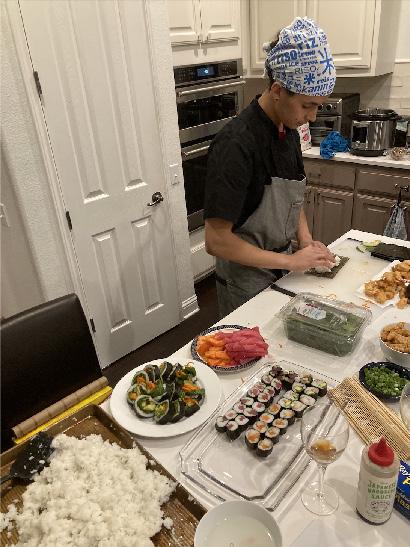
( New writing after edits were suggested) Before working at Kome, Colemanhad a lot of previous experience with food. He had been cooking with his parents since he was young, and learned how to make a variety of recipes like steak, baked goods, and of course, sushi. He and his

“For some people, their job is something they dread. Those people clearly aren’t cooking.” -Nick ColemanNick Coleman perparing sushi. Photo taken by Carlos Aguirre.
family would host dinners with their neighbors and share their delicious creations with their community, so Nick was no novice at cooking. Nick got hired to work for Kome in April last year, and is continuing there now. Nck usually works the morning shift on the weekends. Although many kids his age would not appreciate waking up early to go to their job, Nick enjoys his job. “I’d say my favorite part is definitely being with my coworkers and learning from word of mouth. It’s not really regimented, or strict, but like there’s definitely a reason for it all, like there’s logic behind the madness,” Nick exclaimed. Nick began work at Kome right after the pandemic began, so his work experience was shifted while he was in training. “Yeah, there is definitely a period, because when I started working there, we took the pandemic very seriously. There were, I think, two years where we were entirely online orders. “We’d bring it to your car, so for that period, there was a lot more lax on the learning. There were slower days, and a lot less people on staff, so I did that for the first year or so, and that’s where I really learned the basics, like how to hold a knife.”

Liam Horn is the manager of Austin Parks and Revel, or APR. At APR, Horn in the general manager, or the GM. The GM of a business does several jobs, like handling customers and anything that has to do with service. Although he does has to manage several aspects of his company, he does help out in the kitchen. He cooks at his own house, so he is somewhat experienced in the kitchen. At his job, he teaches new chefs their buisness’s menu and even helps them cook at times. “At APR, its like a big family. I am not afraid to step into the kitchen if we’re short staffed or have inexperienced members that need assistance.”

Italian cuisine is a surprisingly diverse that covers the food of over 20 Italian regions, each with their own distinct taste defined by the natural ingredients available to each region. Italian cuisine is known around the world for its rich ingredients and some popular dishes, including pizza, pasta, and gelato. Italian cuisine puts many of their resources and local wildlife, including olives, tomatoes, basil, and more. Cured meats like prosciutto and a huge assortment of cheeses are used to give Italian food its unique and vibrant flavor.
Indian cuisine is native to India and is meant to be filling and delicious. It is commonly served on a dish called thali tray, which allows several foods to be served at once. Some of their more popular dishes in the US include chicken vindaloo, samosas and curries. Indian food is influenced by Mongolian, Chinese, and Persian culture, among others. It is famous for its use of spices, its richness in taste, and its exquisit flavors. Masala means spice blend. There are several types of masala that varie their ingredients.
Sources: https://mychinesehomekitchen.com/2021/10/22/characteristics-of-chinese-cuisine/ (Characteristics of chinese cuisine, Mexico Drinks! by Facts About Mexico), https://www.culinaryschools.org/international/indian-cuisine.php (A Guide to
 Carlos Aguirre
Carlos Aguirre
Mexican cuisine is a very popular cuisine around the world, especially in central American countries and in southern US. Mexican food is very well known for a variety of their dishes such as tamales, enchiladas, conchas, flan, and tacos. Mexican food includes a variety of delicious and healthy ingredients like avocado, beans, rice, and tomatoes. It also has several types of meat like beef, chicken, pork, fish, rabbit, and even lamb. Spices are used in most Mexican cuisine, including candy. Mexican food uses several types of flours and spices to make each dish unique. Mexican street food is also very popular. Come street food dishes include beans, rice, tlacoyos, marquesitas, and grasshoppers.
Chinese cuisine is well known for some dishes like Beijing roasted duck, kung pao chicken, sweet and sour pork, and dumplings. Many of their dishes are characterized by their glossy sauces and spicy flavor. Many Chinese dishes include animals and animal parts that other cuisines do not usually use like insects, whole animals, scorpions, squid, and more. It is a treat for people who love spicy food, and they even have several vegetarian foods. Chinese food is characterized by its balance of flavor and nutrients, use of fire and knifes, and most importantly, its seasonings.

